Five endangered Whooping Cranes, the twelfth such group to be led by ultralight from Wisconsin to the gulf coast of Florida, arrived the Friday after Thanksgiving on their wintering grounds at St. Marks NWR.
And we were lucky enough to be there to see it!
The cranes arrived a full month ahead of their usual schedule and we were in the neighborhood for the holiday, so we just followed the signs!
I’d been wanting to see the Whooping Cranes at St. Marks for years; I’ve since learned that it’s practically impossible to see them other than when they arrive because the group is secreted away in a distant part of the refuge to protect these terribly endangered birds and to minimize their contact with humans.
Anyone who interacts with the birds wears a funny suit like this to prevent the birds from imprinting on humans; even the ultralight pilots wear a crane suit. Understand that the staff and volunteers with Operation Migration raise these birds from hatchlings and train them to fly behind an airplane in order to teach them a migration route; the ultimate goal being to reestablish an eastern population of wild migratory Whooping Cranes. Seeing them arrive at St. Marks feels like a huge success, but it’s really just the beginning for these five juvenile birds. They have much to learn during the winter ahead. If things go as planned, this spring, they will make their way north without an ultralight to guide them and will continue making this north-south migration for the remainder of their lives.
Many people follow their progress via the web and call themselves “Craniacs”; some even follow the birds’ journey and travel to “flyover” sites, such as the one we visited in St. Marks, to catch a glimpse of them. Regular updates about the cranes are posted in a field journal maintained by staff and volunteers… it’s fun reading and a great way to keep up with what’s happening… click here for a look! Somewhere on Operation Migration’s website (when the birds are migrating south with the ultralight) there is a list of flyover sites posted ahead of time… maybe one will be in your neck of the woods next year!
We waited around at the flyover site for about 45 minutes… there was a delay due to frost that morning. First we saw the tracking van, with its antenna on the roof, pull into the parking lot where the crowd had gathered. A couple minutes later the birds and the ultralights came into view over the distant treeline… they circled around us a couple times (to much cheering from the crowd!) and then disappeared over the horizon to make their way to their secret spot on the refuge where the cranes were “dropped off” for the winter. The pilots and support team returned to the flyover site an hour or so later to answer questions and such. My impression was of a tight-knit group that really enjoys what they do. And they love these birds.
I’m not skilled at making videos with my iPhone, but I get goosebumps watching this, still. My silly giggles at the end say it all…
Top photo from USFWS; used without permission. My iPhone pix were awful.
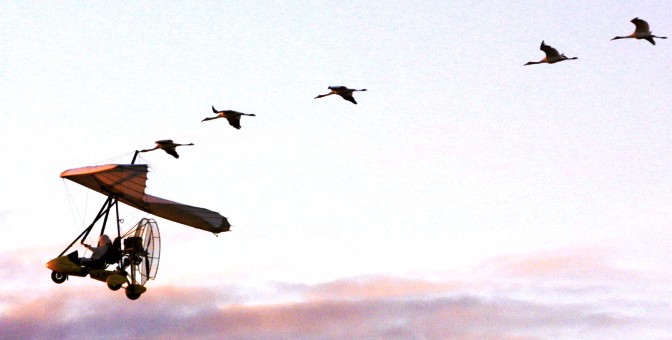
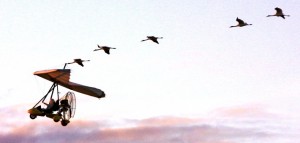
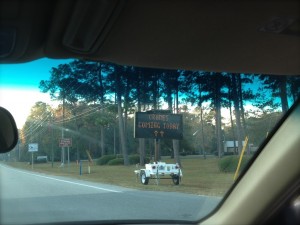
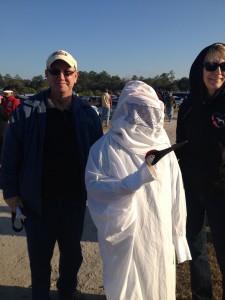
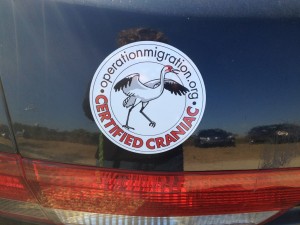
Awesome! I saw several one time flying overhead with sandhills on southward migration along the foothills of the Black Hills of SD. I was going out to one of our school annex bldgs, late for the class I was supposed to be helping work on essays. I was stunned and riveted to the spot till they were out of sight. I was VERY late for class. Weren’t you lucky to be there!
That’s just so cool Laura! So glad you all got to see them. :c) I thought the video was perfect.
Pretty amazing.
Out here we have the 85 “Southern Resident” Orca whales which are an endangered species. They live to be over 100 years old. Every one can be identified by varius markings and they all have names and extensive research histories and lineages. The dedication of volunteers and researchers and followers and the excitement of viewers is similar to what you showed there!
Love this, Laura. Seeing those Whooping Cranes following the Ultralight brought tears to my eyes. Sometimes humans do the right thing, and when they do, it’s spectacular.
The giggles are the perfect comment on this miraculous sight.